How to Care for Different Types of Leather
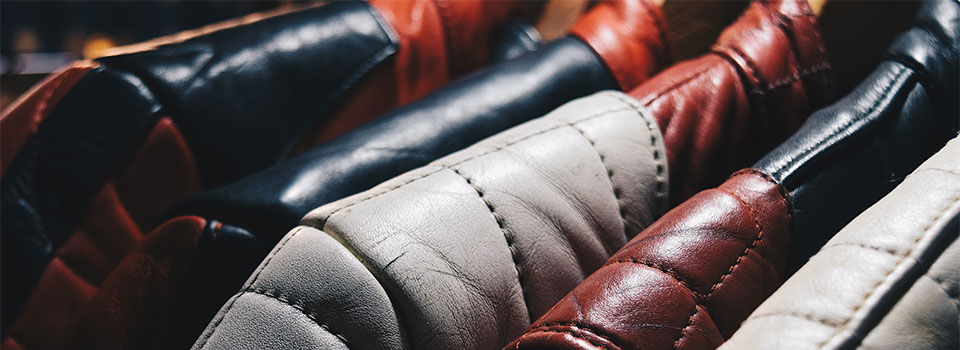
Do you love investing in leather goods and furniture? If your answer is yes, it’s time to get more familiar with the different leather types and the best ways to take care of this fabric.
Everyday maintenance to keep leather clean and in a good shape is similar for most products and types, however, there are tips that you need to know to prolong the life of leather goods.
If you want to know how to care for different types of leather, keep on reading. But before we dive into that here are some general tips on leather care.
General Leather Care Instructions
Leather Cleaning

The safest and easiest way to clean leather is using a damp microfiber cloth once a week. It’s meant to remove dirt and dust that has accumulated on your leather goods. Don’t forget to let them dry completely. You can introduce a trusted leather cleaning product once every few months.
Suede leather is much gentler and should always be dry. So, no damp cloth, just a cleaner that is specifically meant for suede leather.
Leather Waterproofing

Since leather is a material with a naturally porous surface, it needs protection against water and other liquids. Waterproofing will provide that safety using products specifically made for this purpose.
There are numerous sprays and waxes that will coat the surface of your leather goods, making the fabric less prone to damage.
You have to remember that these products will not 100% wick water away from real leather, but they will do a better job than not protecting your goods at all. Once you find a product, make sure to first test it on a small spot of the jacket, shoes, bags. These waterproofing sprays and waxes can cause the leather to appear a little darker than before.
Leather Conditioning
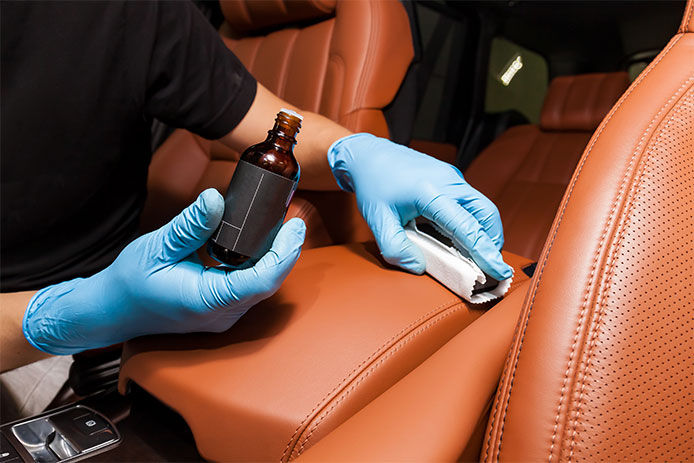
Although leather is quite a durable material, it still requires that extra care to strengthen it, keep it looking fresh and as good as new. Conditioning is one of the essential maintenance steps you need to do, no matter the leather item you own.
This process requires special leather conditioning products that will improve the durability of your shoes, bags, furniture, enhance the appearance of the fabric, strengthen it, and protect it from stains.
Start by cleaning the leather item with a damp microfiber cloth, gentle leather cleaner, and wait for it to dry completely. Next, test the conditioning product on a small spot. You can now apply it on the leather surfaces according to the instructions and wait overnight. Remove any extra product, and repeat this step two to three times per year.
Damaged Leather Care
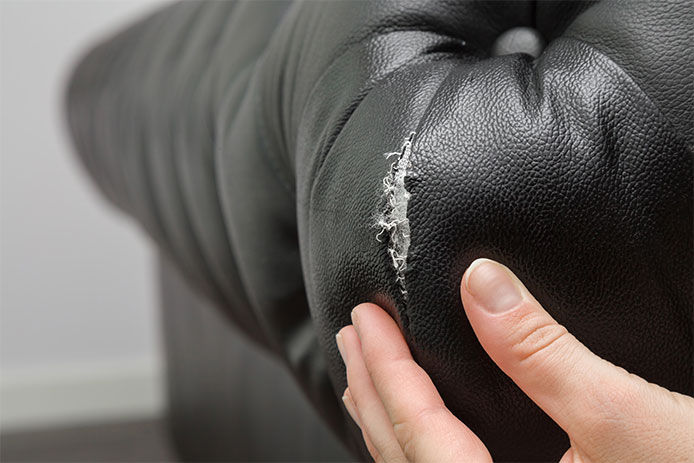
If you notice any dents or cracks in your favorite leather items, don’t despair. Dents are fixed using heat, but you have to be careful. Use your hairdryer on a low heat setting and smooth out the dent with your hands.
For cracks and peels, there are special leather filler products that can help you solve the problem. Eventually, you can leave the job to people who know what they’re doing and call a leather alteration specialist.
You can fight faded color with special recoloring balms or complete coloring kits.
Everyday Care
The everyday care instructions for leather are pretty simple. You need to keep these items away from the sun as it can dry out the leather. Also, don’t apply heat because it can dehydrate leather and cause cracks.
No water, and if the leather gets wet, make sure to wipe it right away. Finally, when you’re not using your leather goods, store them in a cool, dry, and dark place.
How to Care For Different Types of Leather
Grain Leather
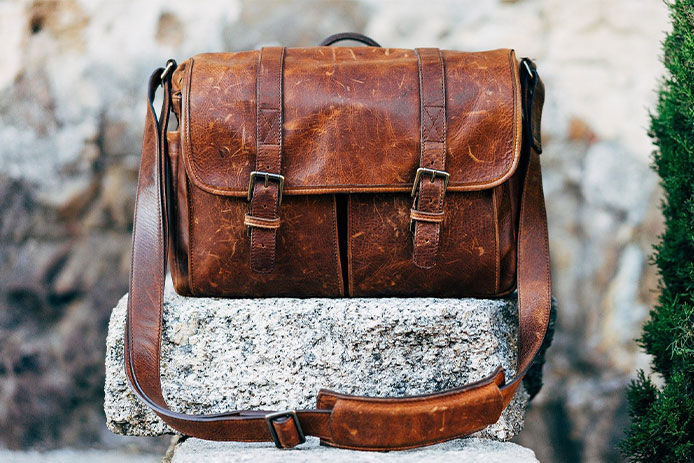
Full-grain is the highest quality and most expensive form of leather. It’s not high maintenance at all; it requires just a quick wipe with a microfiber cloth dampened with warm water!
When you’re done, go over the leather item with a dry cloth. Feel free to condition full- grain leather once or twice a year.
Top grain comes second in quality and is one of the most commonly used leather types for various goods. It’s a little gentler compare to full-grain leather, but the maintenance process is similar.
Wipe these leather goods with a damp cloth, then go over them with a dry one. Always let leather items dry out naturally and completely. For top grain leather products, find a high-quality conditioner that you’ll use once or twice a year.
Split Leather

Split leather, also known as suede, corrected, or coated, is another quality variant used to produce shoes, bags, furniture. This is a gentle type of leather that should always be dry.
If it gets wet, make sure to dry it out right away. Keep split leather away from sunlight because it can cause discoloration.
Protect these goods with a water-repellent product and condition them with a split leather conditioner. Get a special leather brush for regular daily maintenance.
Bonded Leather
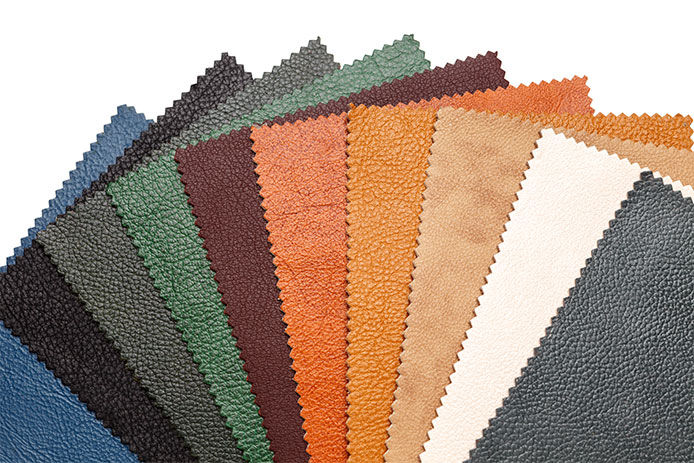
You’ll also find bonded leather often mentioned as blended or reconstructed. That’s because it’s made of leather parts and scraps that are bonded with polyurethane. To clean it, wipe it down with a damp cloth and let it dry completely. Take care of spills right away, and condition them with special products for bonded leather twice a year.
How To Care For Your Favorite Leather Goods
Leather Shoe Care
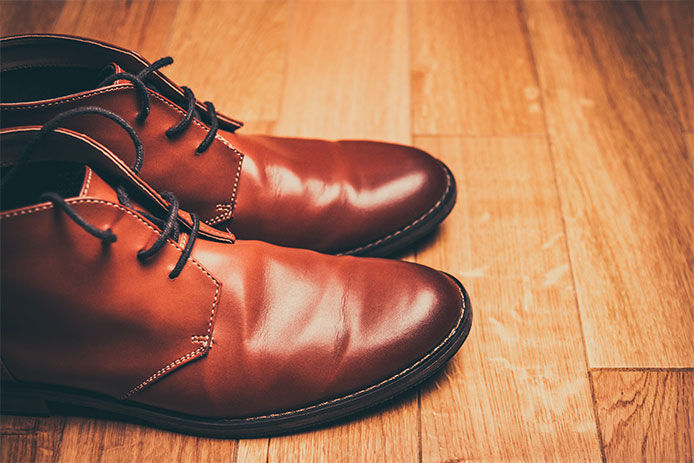
Leather shoes are one of the best investments you’ll ever make. As mentioned above, wipe them with a damp cloth once a week to keep their appearance fresh and shiny. To prolong their lifespan - condition and waterproof them every few months.
Suede shoes should be dry and treated with special products for this leather type. Feel free to polish your dress shoes to keep their gorgeous shine. Finally, protect the shape of your shoes with cedar shoe trees.
Leather Jacket Care

The leather jackets in your closet can be your staple piece for decades. All you need to do is wipe them with a damp cloth every week, condition them twice a year and keep them dry. Avoid folding a leather jacket; instead, hang it on a padded hanger.
Keep it away from the sun in a dry and well-ventilated room. If you ever notice cracks or pilling, contact a jacket repair specialist, and it can look as good as new.
Leather Furniture Care

Like shoes, jackets, and all other leather-made products, furniture requires weekly care to eliminate dust and dirt. A quick wipe with a damp microfiber cloth should be enough to keep it clean.
Opt for high-quality, mild cleaners and conditioners that are meant for the specific leather type. Take care of spills right when they happen, and keep your furniture away from direct sunlight.
Leather is a luxurious and durable fabric that, in most cases, requires a gentle approach. The maintenance is, in general, simple and requires weekly cleans with a damp cloth.
Conditioning and waterproofing will definitely protect the leather, strengthen it and make it more durable. So if you were wondering how to care for different types of leather, we hope we answered all your questions.
Author Bio:
Tony Kantzavelos is the owner of Love Your Leather - currently the largest leather cleaning, repair, and alteration company in Toronto and Southern Ontario. Tony has been altering and repairing leather items since 1987. He is a world-renowned expert in the leather restoration field especially when it comes to restoring high-end purses and handbags. He really loves what he does since it not only makes his customers very happy to have their favorite accessories rejuvenated, but it also helps to reduce the throw-away society that is responsible for the destruction of our natural resources and increase in landfills. A lot of his clients call him the magician due to his ability to repair even the most difficult tears, scratches, and discoloration on leathers.
While do-it-yourself projects can be fun and fulfilling, there is always a potential for personal injury or property damage. We strongly suggest that any project beyond your abilities be left to licensed professionals such as electricians, plumbers, and carpenters. Any action you take upon the information on this website is strictly at your own risk, and we assume no responsibility or liability for the contents of this article.